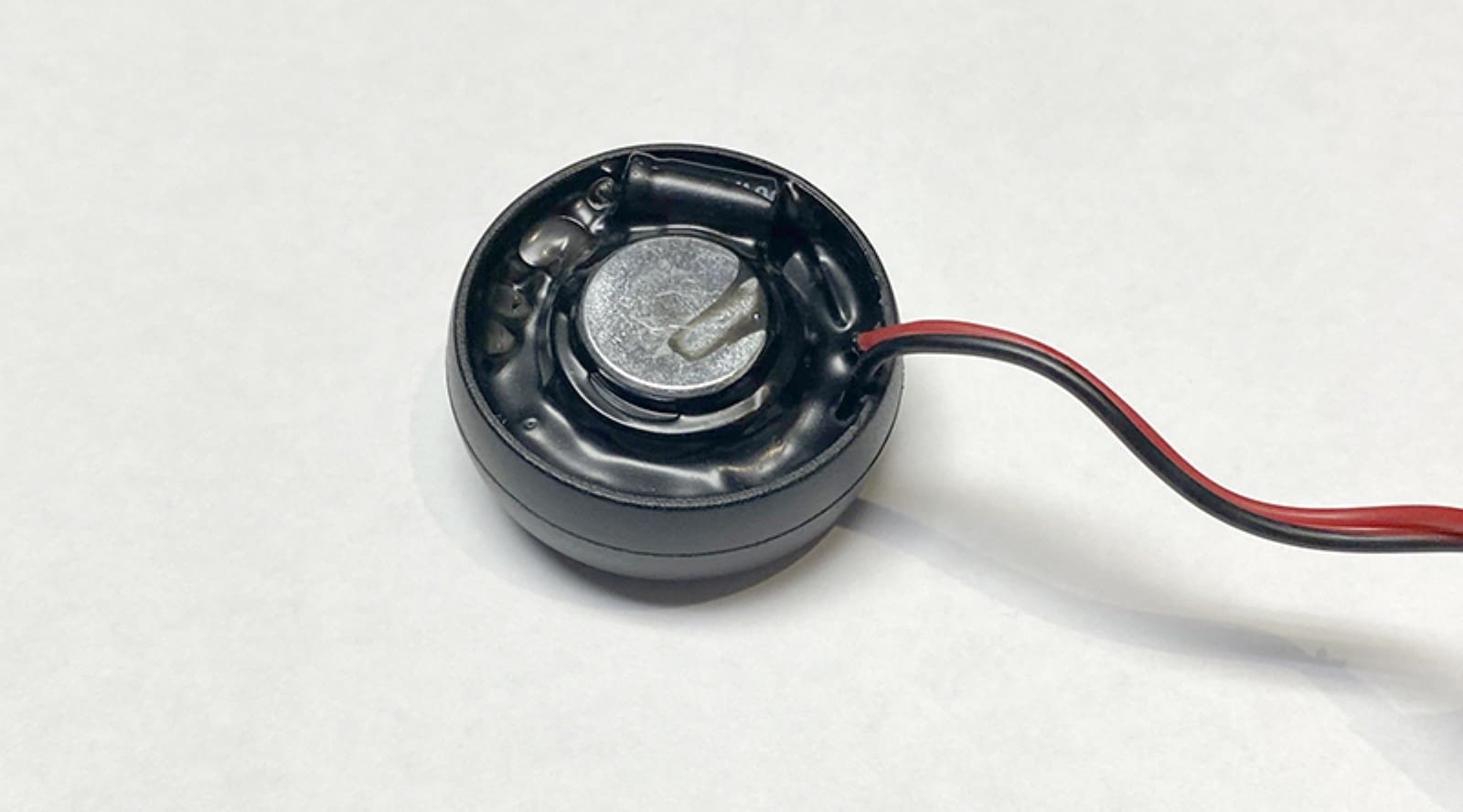When it comes to replacement car speakers, the 6.5-inch class is by far the most popular. If you read any number of our Test Drive Reviews, you’ll know that Rockford Fosgate has three series of speakers in their line, some with two or three additional performance levels. Sitting at the most affordable range is the Prime series. For component speaker sets in the Prime series, they offer the 5-1/4” R152-S, the 6-1/2” R165-S, and the 6-3/4” R1675-S. They also have a good selection of coaxial speakers in four to 6×9-inch sizes to upgrade those factory-installed drivers that don’t sound great or might have worn out. We have a set of the popular R165-S speakers in the lab for this Test Drive Review. Let’s check them out!
Features of the Rockford Fosgate R165-S Component Speaker Set
The R165-S component set includes a pair of 6.5-inch woofers, a set of grilles, and a pair of 1-inch tweeters with flush and surface-mount pods.
The woofers are based around a stamped steel chassis that includes 16 different mounting holes to help ensure they will bolt right into factory-installed speaker locations. Regarding mounting specifications, the woofers require a cutout diameter of 5.05 inches or 124 millimeters. The mounting depth is 1.97 inches or 50.1 millimeters. This puts them on the small side of the 6.5-inch speaker class.
A solution like the Punch Series P165-SE needs a 5.51-inch mounting diameter and 2.24 inches behind the speaker. If space allows, the R1675-S 6.75-inch set requires 5.81 inches in terms of cutout. The Product Specialist you are working with will let you know which size 6.5-inch speaker is best for your vehicle. Thankfully, Rockford Fosgate has all the size options covered and then some!
Regarding specifications, the R165-S set is rated to handle 40 watts of continuous power with peaks of 80 watts. The system sensitivity is specified as 89 dB SPL when fed with one watt at a distance of one meter. Frequency response is given at 60 Hz to 20 kHz. As all Rockford Fosgate speaker specifications comply with the ANSI/CTA-2031 standard, the frequency response information provided here has a tolerance of 3 dB SPL. Not all companies adhere to this industry standard, so be cautious when reading inflated specifications. Wrapping up, the spec sheet claims an Fs of 65 hertz, a total Q (Qts) of 0.75, and an equivalent compliance (Vas) of 0.23 cubic feet or 6.7 liters.

Woofer and Tweeter Design Elements
The woofer cones are made from injection-molded polypropylene doped with mica powder. The addition of mica dramatically improves damping and thermal stability characteristics. At the base of the woofer cone is a 1-inch voice coil. That’s pretty large for a driver at this price point. A conventional domed dust cap keeps debris from the motor assembly and increases the effective radiating area over drivers with a phase plug or coaxial design.
The outer edge of the cone attaches to the chassis using a foam surround. The woofers feature a 0.47 by 3.12-inch magnet. There are no cooling vents under the spider, but there is a 0.4-inch vent up through the center of the T-yoke. Electrical connections are made via terminals on a tab attached to the side of the chassis.

The woofer’s effective radiating area (Sd) is under 16 square inches. By comparison, the Punch P165-SE set we mentioned earlier offers about 22.5 square inches. That’s a lot more from a similarly sized speaker. Part of that additional area is attributable to the Vertical Attach Surround Method (VAST) design in the Punch set and some to the more significant mounting requirements. Go with the largest that will fit in your car or work with your budget.
The tweeters are based on a Mylar dome design and feature a compact neodymium magnet. Your installer will find the tweeters installed in their flush-mount cups out of the box. Rockford Fosgate includes a set of surface-mount cups with flat and angled bases to provide as many mounting options as possible. You will likely not find several mounting options in other companies’ entry-level component speaker sets.

Crossover Design
The R165-S set has a simple first-order (-6 dB/octave) high-pass filter integrated into the tweeters. The capacitor value is set to provide a high-pass frequency of 12 kHz, which is the average cutoff frequency for first-order filters. Unlike in some tweeters, the capacitor is epoxied into the rear of the tweeter housing beside the magnet to keep wiring simple. This location also eliminates the chance of using the tweeter without the crossover.
A set of wire pigtails extend about six inches from the tweeter and can be attached to the extra terminals on the woofer or directly to the radio or amplifier powering the system.

Driver Measurements
While we usually look at the woofer first, we will start the objective portion of the review by investigating the tweeters. We like to measure the impedance of tweeters in a component set to look for their resonant frequency and overall impedance characteristics. Drivers with high impedances at high frequencies can be challenging to drive.
In the case of the R165-S set, the automated resonant frequency (Fs) measurement process of our Woofer Tester doesn’t work because the crossover capacitor is built into the tweeters. Instead, we ran an arbitrary impedance sweep to examine the overall impedance picture. We can see a slight bump in the blue phase trace around 2.3 kHz, which is reasonable to expect as an Fs value for these drivers.

Now it’s time to inspect the woofers. As always, we measure the out-of-the-box impedance before we break the drivers in. Once played with a low-frequency test tone for at least eight hours, we let the drivers cool and repeated the measurement. If there is a significant shift in the Thiele-Small parameters, the drivers need some break-in before they’ll sound their best.
In the case of the woofers in this set, even after several days of playing (I left them on when I left for SEMA), the parameters barely changed at all. The Fs dropped minutely from 76.3 to 75 hertz. Further, there was no measurable change in the total Q (Qts). So, if you have these in your car, the way they sound when brand new is how they will sound after many hours of playback.
The woofer impedance curve shows small ripples in the impedance and phase curves at about 1.3 kHz and up. They aren’t massive, which is impressive for an affordable speaker set.

Auditioning the Rockford Fosgate R165-S Component Speaker Set
As always, I set one woofer and tweeter up in our reference enclosure and fed it with a signal from a 300-watt-per-channel high-bias class-AB amplifier. A classic copper-chassis CD player feeds the amp. All the music is played from compact discs. Old school, right?
I started the audition with “The Peppery Man” by Natalie Merchant. I first noticed the horns, which are likely a bass clarinet. They are pretty forward in the mix and full of body and resonance. The same goes for Natalie’s voice, which was clear in the presentation. There was some brightness up high, with emphasis on the letter A. When the drums came in, the midbass surprised me a bit. I didn’t expect much from such a small driver, but I was genuinely pleased with the overall output and presentation of this very affordable speaker system.

Next, I listened to “Sirius” and “Eye in the Sky” by The Alan Parsons Project. Once again, the midbass exceeded my expectations for what might best be described as a 6-inch rather than a 6.5-inch woofer. There was a good thud, but not enough to be felt in the seat.
The guitar in the introduction to “Eye in the Sky” was nicely detailed, though it had a little more upper midrange presence than would be critically accurate. This got me thinking about how these speakers would typically be installed in a vehicle—more on that in a second.

The second-to-last track I played was “Angel” by Massive Attack. This song has a lot of low-frequency content. The bass line is centered around 45 hertz, with loud content down to 33 or 34. With the speakers playing a full-range signal from the source unit and amplifier, they got pretty upset each time the bass hit. If you want to play music with lots of bass, add a subwoofer to the system and apply a high-pass filter to the speakers. They will perform well. Try to overwork them, and you won’t be happy with the results. This, of course, applies to any speaker with limited cone excursion capabilities. Bass requires lots of power and cone excursion. That’s precisely why subwoofers exist.
Car Audio Speaker Application Considerations
Now, back to the comment about speaker installation. Rather than listening to the speakers directly on-axis with the listening position, I turned the enclosure about 70 degrees to the right. I then moved the tweeter to the left side of the enclosure, putting it about 20 degrees off-axis to the listening position.
My theory is that because the system uses a shallow crossover slope on the tweeter and no low-pass crossover on the woofer, Rockford Fosgate would be relying on the directivity of the midrange to limit frequency response. To challenge my theory, I played “Nude” by Radiohead. Thomas Yorke’s falsetto voice can be challenging to reproduce. As I’d hoped, being off-axis with the midrange speaker calmed the upper midrange output and presented a nicely balanced rendition of the track.
If you were to audition these speakers on a display board, you would likely not like them much. However, the results would be quite enjoyable once installed in a vehicle in the stock door locations with the tweeter in the sail panel, A-pillar, or dash.
If any Rockford Fosgate retailers are reading this and you have the R165-S set on display, move the speakers down low so the listener is off-axis with the woofer. Use the included angled surface-mount cups for the tweeters and aim them toward the listening position.
Conclusions on the Rockford Fosgate R165-S Component Set
Every time I audition a different car audio component, I have the opportunity to apply what I’ve learned to the experience. Sometimes, listening to something is as simple as wiring it up and turning it on. However, that’s more akin to a home audio product than car audio. Unlike home speakers, we, the professionals who integrate the raw driver components into your vehicle, are responsible for completing the second half of the speaker system design.
The Rockford Fosgate R165-S is a good quality speaker set at an affordable price. They include grilles and several tweeter mounting options, which is something you won’t find in similarly priced options from most other companies. Importantly, these speakers are designed to work well in your vehicle. The design, quality materials, and a reputable dealer base make these an excellent option for someone who wants to upgrade a car audio system that doesn’t have massive amounts of power. Combine these with a subwoofer so the system can play loudly, and you’ll be pleased.
You can find an authorized Rockford Fosgate retailer near you using the Dealer Locator on their website. Follow them on Facebook, Instagram, and YouTube to learn about their amazing car, marine, motorcycle, and powersport audio solutions.

